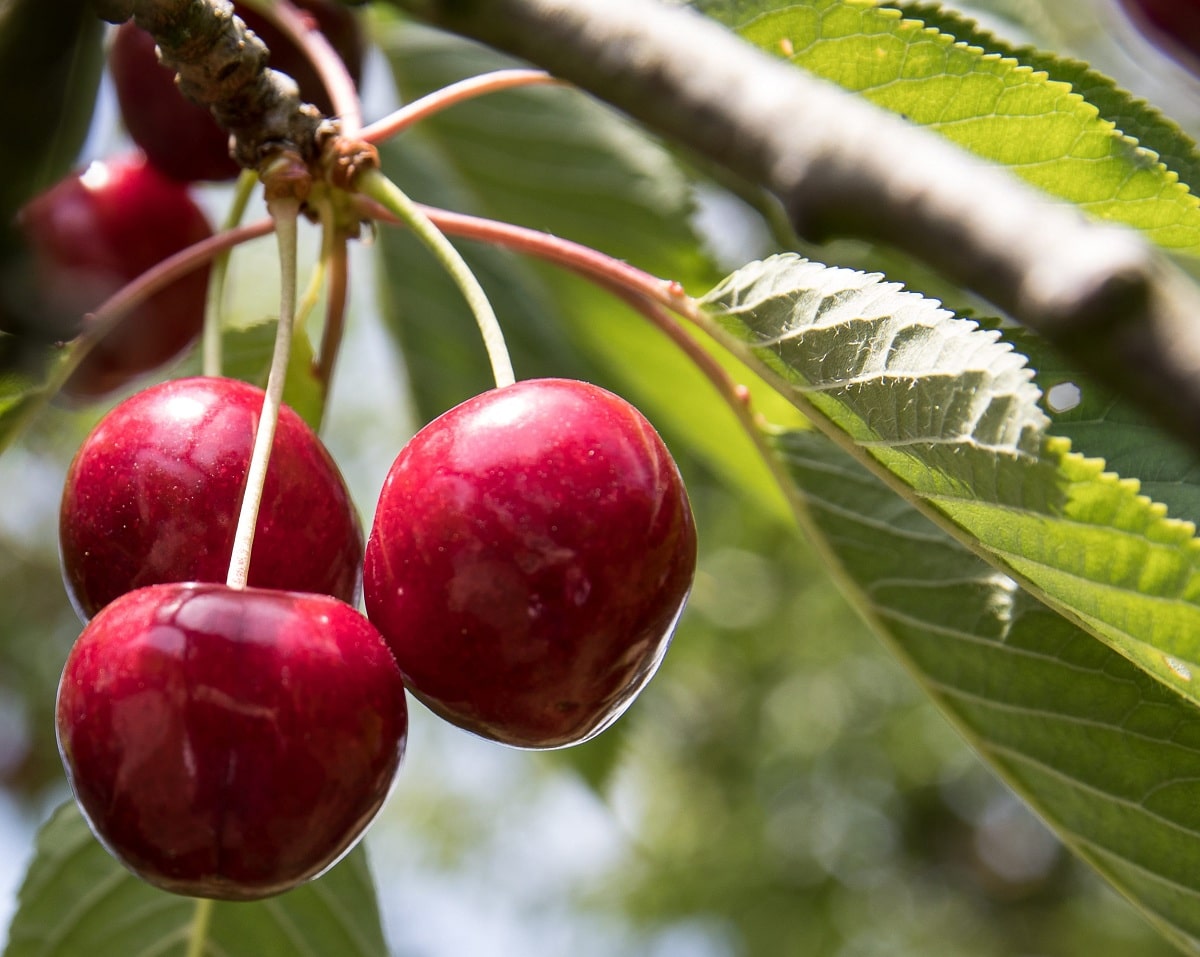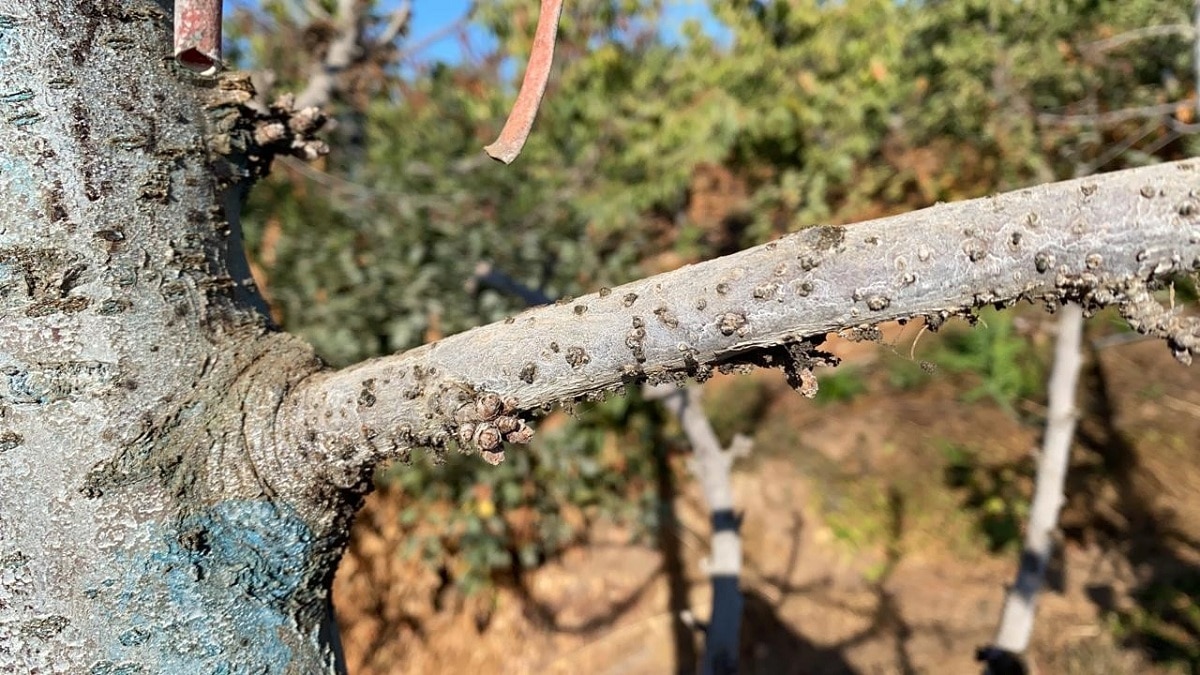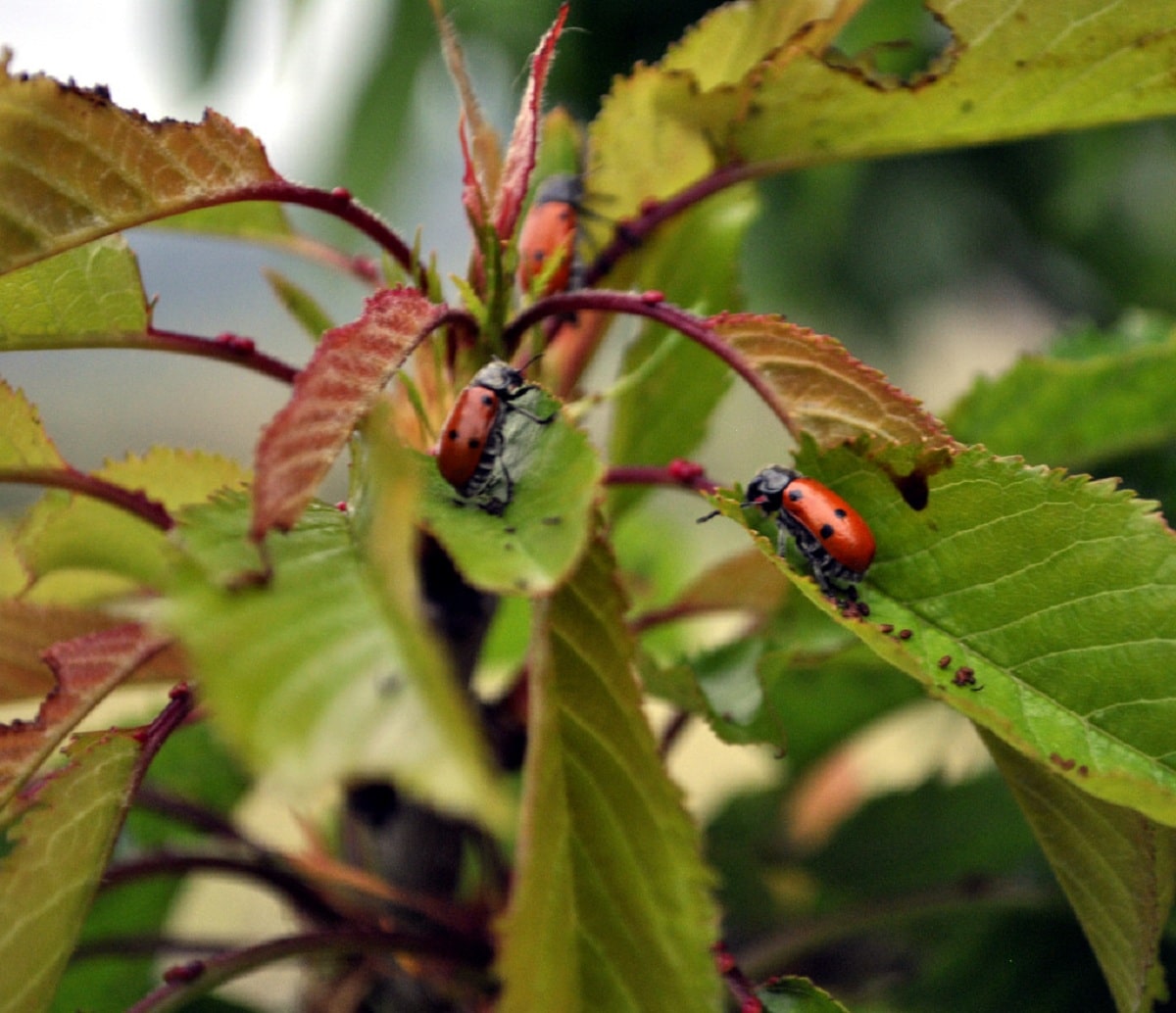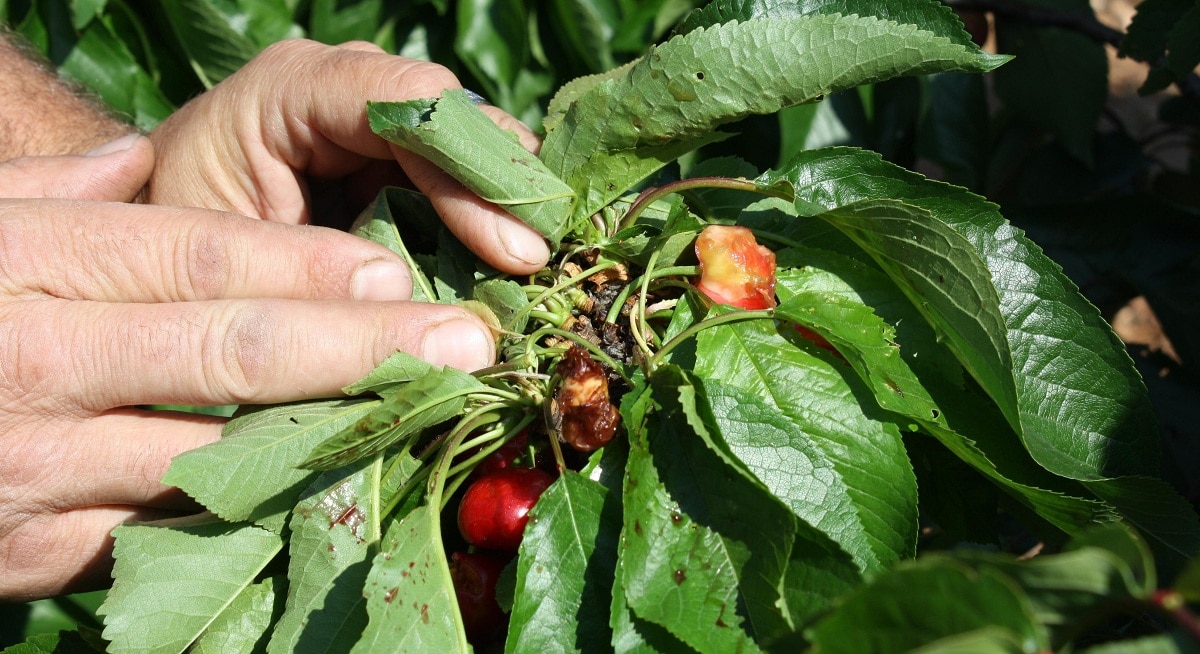
The vast majority of people who are dedicated to planting cherry trees have the serious problem of not knowing well what the different are cherry tree pests. There are numerous organisms that can attack our crops and cause great damage to them. You have to know how to prevent these pests and recognize the symptoms well to prevent their spread. There are also multiple ways to eradicate a pest.
Therefore, we are going to dedicate this article to tell you what the main pests of the cherry tree are, their characteristics, symptoms and how to avoid them.
Main pests of the cherry tree

Cherry trees are delicate and will be affected by different pests and diseases of fruit trees. Cherry processing must be done at the ideal time to obtain the highest quality cherries. Most cherry tree care should be aimed at treating pests and diseases preventively.
Cherries are a fast growing fruit and there is almost no place for phytosanitary treatments. Pests must be controlled preventively and follow the recommendations of the Phytosanitary Bulletin issued by the Directorate of Plant Health of the Autonomous Region.
The prevention and treatment of different diseases and insect pests of cherry trees is very important to keep cherry trees in good condition. To produce high quality cherries, it is necessary to use different authorized control measures to deal with cherry tree pests.
If we want to have fruit of the highest quality, we must process it at the ideal time. Most of the care for this tree should be used to deal with potential pests and diseases. In other words, Most of the care that plants need goes beyond location, soil, watering, etc. But it is also important to carry out prevention activities against pests and diseases.
All of this makes it crucial to prevent pests from attacking trees before they are eliminated.
Cherry tree pests: symptoms and recognition

Aphids
Cherry aphids are probably the most common pests and have the biggest impact on cherries. Over a period of time, the natural enemies of aphids will be overwhelmed by the growth of the aphid population and it is necessary to apply authorized control treatments.
The quality of the cherries degrades, they ripen late, become sticky, deteriorate in flavor and lose commercial value. The cherry buds and leaves are deformed and the tree loses some vitality.
Cherry fly
The adaptability of the cherry fly, makes its area of influence has exploded in recent years, affecting early production areas. Produces significant economic damage by depreciating the value of the cherry. The cherries become soft and their flavor noticeably worsens when the fly makes it suitable for presence.
Big-headed worm
Bighead worm activity can be very serious if cherry trees are under water stress. When drought episodes occur and their activity is detected, it is necessary to apply preventive treatments.
Damage caused by the Bighead Worm: The larvae of this pest, They feed on the cambium of the cherry tree trunk, this cuts off the sap flow and dries the cherry tree completely. This is one of the main causes of cherry trees drying out.
Drosophila Suzukii
Like the vinegar fly, when ripe cherries are found, the Suzuki fruit fly it's a very dangerous new plague. It is currently one of the most worrying pests in the cherry production sector.
San Jose louse
Although it is not usually a closely related pest. If San Jose lice control is neglected, it can cause very serious damage to cherry plantations. Winter oil treatment is inexpensive and recommended to control this cherry pest.
Cherry borer
Cherry borer larvae thrive best on low viability trees and when the cherry tree dries up they can cause serious damage.
Birds
In addition to reducing yields, birds often damage cherries more than they eat. To control it, you can hang pieces of shiny metal or pieces of tin, which will move from the branches with the wind. CDs can work too. Use a scarecrow to scare them away.
Cherry tree diseases

The cherry tree is not only attacked by pests, but also by diseases. As mentioned before, this is a fairly weak tree in terms of vulnerability. We are going to see what are the main diseases in a summarized way that can attack the cherry tree.
- Monica: it affects the flower and the fruit, damaging the production of cherries. This makes them unsuitable for marketing. Losses can be large, especially in rainy years. There are some cherry varieties that are more sensitive and can end in serious disasters when control treatment measures are not applied.
- Anthracnose: Control treatments against Anthracnose are essential if we want to obtain good quality fruits. The disease not only affects the leaves, but also the fruit. Attacked, preventing its development and reducing the total vigor of the cherry tree.
- Screening: It is also known by the name of Perdigonada and it is a fungal disease that mainly attacks the leaves. It can affect the fruit, producing some spots, reducing the commercial value.
- Gnomony: this disease and increases the number of fruits affected by cracking, which can cause significant damage to the entire harvest.
These trees can also be attacked by various bacteria that can become a serious problem for our crops. Let's see which are the main ones:
- Xylella fastidiosa: It is a bacterium that worries not only the cherry tree, but also other stone fruit trees such as olive trees.
- Gums: it mainly affects areas where there are significant temperature variations. The bacteria infect the trunk and cause serious damage. The main symptom is cherry gum.
I hope that with this information you can learn more about cherry tree pests and their characteristics.